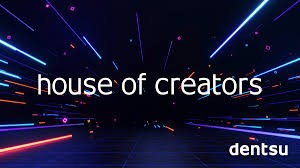
Inspiring the next generation of tech creators begins with cultivating curiosity and confidence in a world increasingly shaped by digital innovation. Technology is no longer a niche field reserved for specialists—it’s a universal language that touches every industry, every community, and every aspect of daily life. To empower young minds to become creators rather than just consumers, we must shift the narrative from passive engagement to active exploration. This means encouraging experimentation, celebrating problem-solving, and making technology feel accessible, relevant, and deeply human.
The journey starts early, often with a spark—a moment when a child realizes they can build something, not just use it. That spark might come from coding a simple game, assembling a robot, or designing a website. These experiences are more than technical exercises; they’re gateways to creativity and agency. When young people see that their ideas can take shape through technology, they begin to understand its potential as a tool for expression and impact. The challenge is to nurture that spark, to provide environments where exploration is encouraged and failure is seen as part of the process rather than a setback.
Education plays a pivotal role in this transformation. Traditional models often emphasize rote learning and standardized outcomes, but inspiring tech creators requires a different approach. Project-based learning, interdisciplinary collaboration, and real-world problem solving help students connect theory to practice. When a classroom becomes a lab for innovation, students learn to think critically, iterate quickly, and work collaboratively. They begin to see technology not as a subject, but as a medium through which they can shape the future. Schools that integrate coding, design thinking, and digital literacy into their core curriculum are laying the foundation for a generation that’s not just tech-savvy, but tech-empowered.
Mentorship and representation are equally important. Young creators need role models who reflect their backgrounds, interests, and aspirations. Seeing someone who looks like them succeed in tech can be a powerful motivator. It sends a message that innovation is not limited to a select few—it’s open to anyone with curiosity and drive. Mentors provide guidance, encouragement, and perspective, helping young people navigate challenges and envision possibilities. Whether through formal programs or informal relationships, mentorship creates a bridge between potential and achievement.
Access to tools and resources is another critical factor. Talent is universal, but opportunity is not. Many aspiring tech creators lack access to the hardware, software, and connectivity needed to explore their interests. Bridging this gap requires investment in infrastructure, community programs, and inclusive design. Libraries, makerspaces, and online platforms can serve as hubs for learning and experimentation. When resources are democratized, innovation flourishes. It’s not just about giving people devices—it’s about giving them the means to create, collaborate, and contribute.
The tech industry itself has a role to play in inspiring the next generation. Companies can support education initiatives, sponsor hackathons, and open their doors to young learners. Internships, apprenticeships, and outreach programs help demystify the industry and provide tangible pathways into tech careers. More importantly, businesses can model inclusive cultures that value diverse perspectives and foster continuous learning. When young people see that tech is not just about coding, but about solving meaningful problems, they’re more likely to engage with purpose and passion.
Storytelling is a powerful tool in this effort. Sharing the journeys of tech creators—how they started, what they struggled with, and what they achieved—helps humanize the field. It shows that innovation is not a straight line but a series of experiments, setbacks, and breakthroughs. These stories inspire resilience and spark imagination. They remind us that behind every app, algorithm, or invention is a person who dared to ask “what if?” and followed that question with action.
Inspiring tech creators also means embracing a broader definition of creativity. Technology is not limited to engineering or programming—it intersects with art, music, social impact, and entrepreneurship. A young person designing a digital comic, building a climate app, or creating a virtual reality experience is engaging with tech in meaningful ways. By recognizing and celebrating these diverse expressions, we expand the possibilities of what it means to be a creator. We move beyond narrow definitions and open the door to innovation that is inclusive, imaginative, and transformative.
Ultimately, inspiring the next generation of tech creators is about building a culture of possibility. It’s about creating spaces where curiosity is nurtured, ideas are valued, and experimentation is encouraged. It’s about showing young people that technology is not just something they use—it’s something they can shape. When we invest in education, mentorship, access, and storytelling, we empower a generation to not only imagine the future but to build it. And in doing so, we ensure that the tools of tomorrow are shaped by the diverse voices and visions of today.